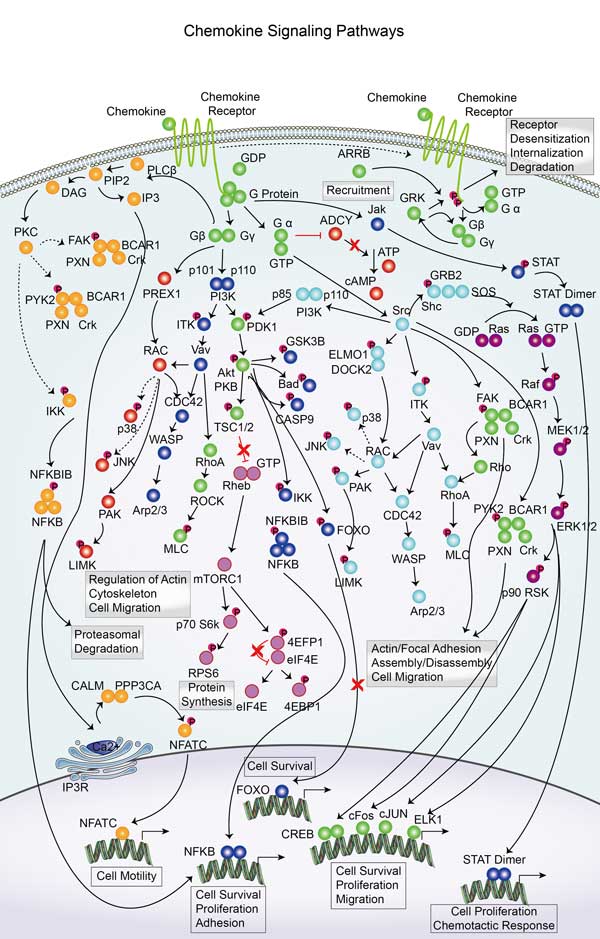ADCY3
-
Official Full Name
adenylate cyclase 3 -
Overview
This gene encodes adenylyl cyclase 3 which is a membrane-associated enzyme and catalyzes the formation of the secondary messenger cyclic adenosine monophosphate (cAMP). This protein appears to be widely expressed in various human tissues and may be involved in a number of physiological and pathophysiological metabolic processes.
Recombinant Proteins
- Human
- Rat
- Zebrafish
- Mouse
- E.Coli/Yeast
- Wheat Germ
- E.coli
- Mammalian Cells
- HEK293
- His
- GST
- T7
- Non
| Cat.# | Product name | Source (Host) | Species | Tag | Protein Length | Price |
|---|---|---|---|---|---|---|
| ADCY3-3173H | Recombinant Human ADCY3, His-tagged | E.Coli/Yeast | Human | His | 1144 |
|
| Adcy3-3174R | Recombinant Rat Adcy3, His-tagged | E.Coli/Yeast | Rat | His | 1144 |
|
| ADCY3-328H | Recombinant Human ADCY3 Protein, GST-tagged | Wheat Germ | Human | GST |
|
|
| ADCY3-6925H | Recombinant Human ADCY3 protein, His & T7-tagged | E.coli | Human | His&T7 | Lys501~Asn736 |
|
| ADCY3-7540Z | Recombinant Zebrafish ADCY3 | Mammalian Cells | Zebrafish | His |
|
|
| ADCY3-9021HCL | Recombinant Human ADCY3 293 Cell Lysate | HEK293 | Human | Non |
|
|
| ADCY3-0242H | Recombinant Human ADCY3 Protein (Lys501-Asn736), N-His-tagged | E.coli | Human | His | Lys501-Asn736 |
|
| ADCY3-3312H | Recombinant Human ADCY3 protein, His-GST-tagged | E.coli | Human | GST&His | Lys501~Asn736 |
|
| ADCY3-3532H | Recombinant Human ADCY3 protein, His-tagged | E.coli | Mouse | His | 470-632 aa |
|
Involved Pathway
ADCY3 involved in several pathways and played different roles in them. We selected most pathways ADCY3 participated on our site, such as Activation of GABAB receptors,Activation of NMDA receptor upon glutamate binding and postsynaptic events,Adenylate cyclase activating pathway, which may be useful for your reference. Also, other proteins which involved in the same pathway with ADCY3 were listed below. Creative BioMart supplied nearly all the proteins listed, you can search them on our site.
| Pathway Name | Pathway Related Protein |
|---|---|
| Bile secretion | SLC51A,ABCB1,ADCY9,SLC9A1,SLC10A2,SLC5A1,ATP1A2,SLC9A3,OSTA,SLCO1B2 |
| Adenylate cyclase activating pathway | ADCY9,ADCY7,ADCY1,ADCY8,ADCY6 |
| Activation of NMDA receptor upon glutamate binding and postsynaptic events | PDPK1A,DLG4,NETO2,ADCY1,NEFLB,CAMKK1B,ADCY8,AKAP9,SLC14A2,CREB1 |
| Adrenergic signaling in cardiomyocytes | ADCY6,PPP1CC,PPP2R5D,MYL2B,CACNB2A,FXYD2,PRKACAA,PPP2R5E,PPP1CBL,TMEM8C |
| Aldosterone synthesis and secretion | ITPR2,ITPR1,SLC14A2,PDE2A,CAMK1G,ADCY1,CREB3L2,AKR1C1,CREB5,CALML5 |
| Aquaporin-mediated transport | AQP9B,AQP10,GNB5,MIPA,GNB3B,AQP1A.1,ADCY6,AQP1A.2,AQP3A,GNB3A |
| Adenylate cyclase inhibitory pathway | ADCY1,ADCY6,ADCY7,ADCY8,ADCY9 |
| Activation of GABAB receptors | KCNJ2A,GNGT2A,ADCY7,KCNJ15,KCNJ10,KCNJ4,GNB3A,ADCY9,KCNJ2,KCNJ5 |
Protein Function
ADCY3 has several biochemical functions, for example, ATP binding,adenylate cyclase activity,calcium- and calmodulin-responsive adenylate cyclase activity. Some of the functions are cooperated with other proteins, some of the functions could acted by ADCY3 itself. We selected most functions ADCY3 had, and list some proteins which have the same functions with ADCY3. You can find most of the proteins on our site.
| Function | Related Protein |
|---|---|
| calmodulin binding | ADD1,SLC8A2,TRPV4,MYH10,CAMK2D2,CAMK2D1,CAMKK2,SPHK1,VAMP2,CAMK2A |
| adenylate cyclase activity | ADCY1A,ADCY1,Adcy4,ADCY2B,ADCY8,ADCY1B,ADCY6,ADCY9,GNAS,ADCY7 |
| metal ion binding | RBM4.2,CTH1,ZNF548,FYNB,HMOX2A,ZNF202,CIAPIN1,PCXA,ESRRGA,NT5C2A |
| calcium- and calmodulin-responsive adenylate cyclase activity | ADCY1,ADCY6,ADCY8 |
| ATP binding | XRCC5,DDX56,NEK1,MOV10B.2,GSG2,RPS6KAL,ADCY9,NTRK2,PRKACBA,NME2A |
Interacting Protein
ADCY3 has direct interactions with proteins and molecules. Those interactions were detected by several methods such as yeast two hybrid, co-IP, pull-down and so on. We selected proteins and molecules interacted with ADCY3 here. Most of them are supplied by our site. Hope this information will be useful for your research of ADCY3.
Dlg4
ADCY3 Related Signal Pathway
Resources
Related Services
Related Products
References
- Sebo, P; Osicka, R; et al. Adenylate cyclase toxin-hemolysin relevance for pertussis vaccines. EXPERT REVIEW OF VACCINES 13:1215-1227(2014).
- Pravetoni, M; Pentel, PR; et al. Effects of an Oxycodone Conjugate Vaccine on Oxycodone Self-Administration and Oxycodone-Induced Brain Gene Expression in Rats. PLOS ONE 9:-(2014).




